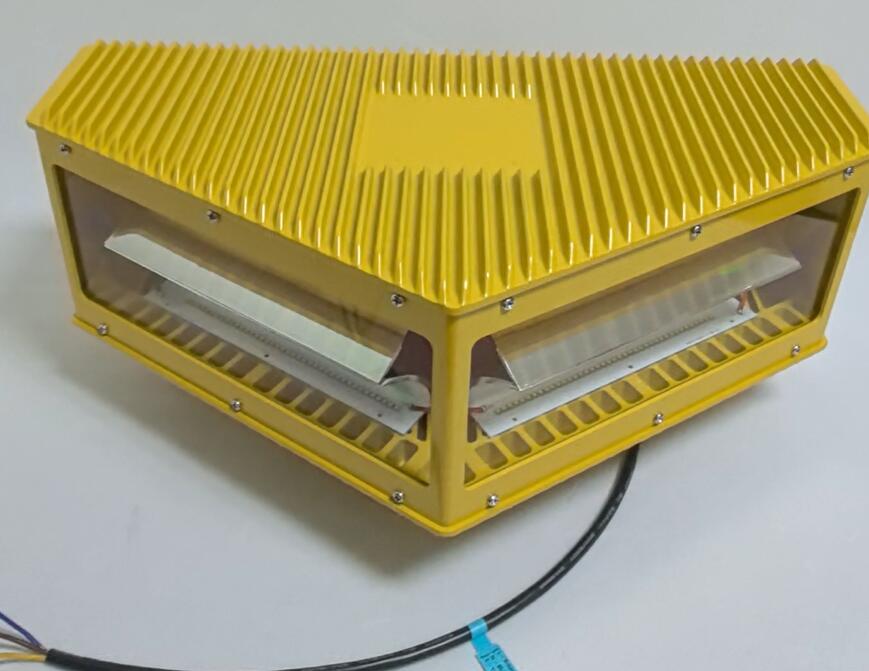As urban skylines continue to evolve with increasingly taller structures, crane aviation lights have become critical safety components in construction zones. These specialized warning systems protect low-flying aircraft from temporary aerial obstacles, serving as visible markers that prevent catastrophic collisions. Modern crane aviation lights combine advanced LED technology with intelligent control systems to meet stringent aviation safety standards while adapting to challenging construction environments.
This article examines the vital role, technological innovations, and regulatory requirements surrounding crane aviation lights in today's rapidly developing urban landscapes.
Why Crane Lighting Matters in Aviation Safety
1. Preventing Airspace Collisions
Construction cranes represent temporary but significant aerial hazards
FAA reports show properly lit cranes reduce near-miss incidents by 78%
Dual-light systems provide redundancy for critical safety
2. Supporting Urban Air Mobility
Special considerations for drone corridors near construction sites
Lighting solutions for vertiport construction projects
Integration with future air taxi route planning
3. Nighttime and Low-Visibility Operations
High-intensity strobes for foggy conditions
Glare-reduction technology for pilot visibility
Automatic brightness adjustment based on ambient light
Modern Technological Advancements
1. Next-Generation LED Systems
85% more energy efficient than traditional lighting

50,000+ hour lifespan with minimal maintenance
Instant-on capability with no warm-up time
2. Smart Power Solutions
Solar-hybrid configurations for remote sites
Battery backup with 14+ day autonomy
| Crane Aviation Lights |
Weatherproof designs for extreme conditions
3. Intelligent Monitoring Features
Remote performance diagnostics
Automated fault alerts
| Crane Aviation Light |
Cloud-based maintenance tracking
Regulatory Compliance Standards
1. International Aviation Requirements
ICAO Annex 14 lighting specifications
Height-based intensity classifications
Proper flash pattern regulations
2. Regional Compliance Mandates
FAA AC 70/7460-1K for North America
EASA standards for European operations
CASA regulations for Australian airspace
3. Construction-Specific Protocols
Temporary structure lighting guidelines
NOTAM coordination procedures
Construction airspace zoning rules
Specialized Applications
1. High-Rise Construction
Tower crane lighting configurations
Synchronized multi-crane systems
Progressive lighting for climbing cranes
2. Bridge and Infrastructure Projects
Long-span crane illumination
Waterway navigation considerations
Coastal environment durability
3. Industrial Plant Maintenance
Refinery crane lighting solutions
Explosion-proof certified options
Hazardous area classifications
Installation Best Practices
1. Strategic Positioning
Optimal light placement for maximum visibility
Height-specific configuration requirements
Obstruction-free mounting considerations
2. Power System Planning
Grid-connected vs. autonomous solutions
Backup power requirements
Energy efficiency optimization
3. Maintenance Protocols
Regular cleaning schedules
Storm damage prevention
Pre-flight check procedures
Future Innovations in Crane Lighting
1. Li-Fi Communication
Aircraft identification capabilities
Real-time position data transmission
Airspace status updates
2. AI-Enhanced Systems
Predictive lighting adjustments
Automated traffic density response
Collision risk algorithms
3. Advanced Materials
Self-cleaning surface treatments
Impact-resistant composite housings
Temperature-adaptive components
Crane aviation lights have evolved from simple warning beacons to intelligent safety systems that actively contribute to airspace management. As construction projects grow taller and urban airspace becomes more congested, these critical safety devices will play an increasingly important role in preventing accidents and ensuring regulatory compliance.
The next generation of crane aviation lights will likely incorporate drone detection systems, augmented reality positioning markers, and seamless integration with urban air mobility networks. Investing in proper crane lighting today not only meets current safety requirements but prepares construction projects for the aerial traffic challenges of tomorrow. These unassuming yet vital components continue to serve as silent guardians of construction zone safety, protecting both aviation assets and ground personnel around the clock.